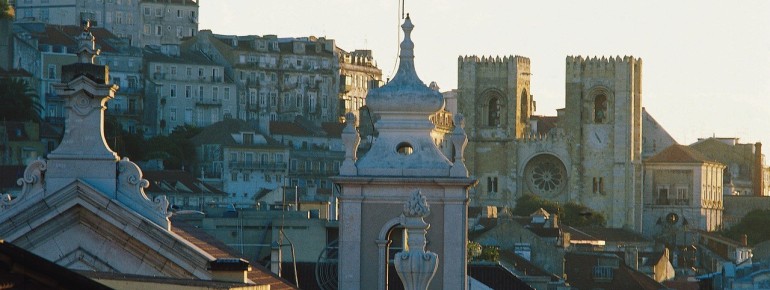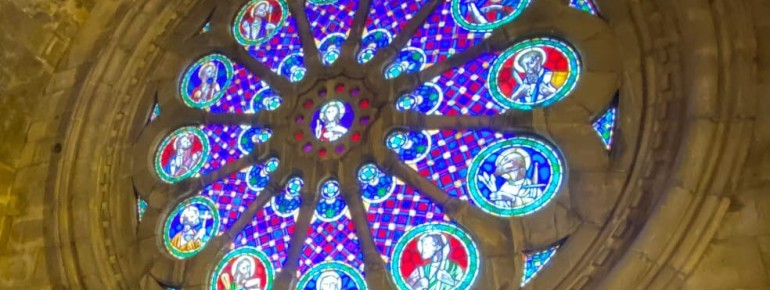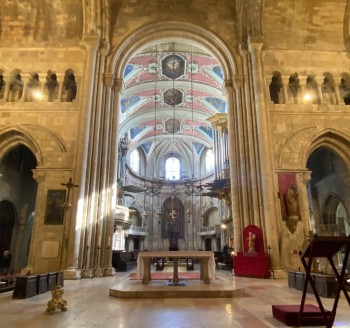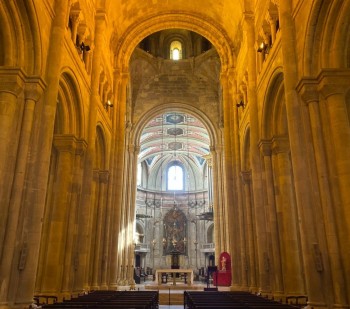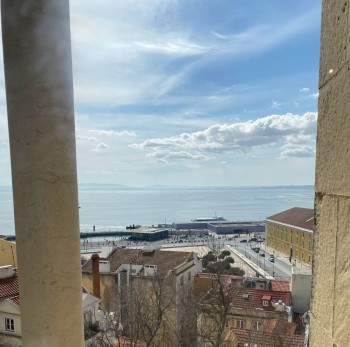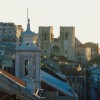Contents
Description
The Sé de Lisboa is not only the oldest church in Lisbon, but also an impressive testament to over 800 years of history. The cathedral stands in the heart of the Alfama district and impresses with its imposing Romanesque façade, flanked by two massive bell towers and resembling a fortress. The building stands on the site of a former Arab mosque and symbolises the Christian reconquest of Lisbon.
Architecture and artistic treasures
The Sé de Lisboa combines various architectural styles from different eras. The original Romanesque nave was expanded over the centuries with Gothic elements, and later Baroque and Neoclassical components were added. Inside, high vaults, imposing columns and beautifully designed chapels with painted azulejos tiles are impressive. The Gothic cloister, unique in Portugal, is considered an architectural masterpiece and houses important archaeological finds.
The relics and the treasury
The most valuable treasures are kept in the treasury: the ark containing the mortal remains of Saint Vincent, the patron saint of Lisbon. According to legend, two crows guarded the boat that brought his relics to Lisbon – which is why two crows on a boat feature prominently in the city's coat of arms. The original 12th-century baptismal font, in which St. Anthony was baptised according to tradition, is also venerated. The Patriarchal Monstrance, one of the most magnificent monstrances in the world, is one of the most important liturgical works produced in Portugal in the 18th century.
Historical Information
The Sé de Lisboa was founded in 1147 by Portugal's first king, Afonso Henriques, shortly after the successful reconquest of Lisbon from the Moors. An Arab mosque previously stood on the site of today's cathedral – the new building symbolised Christian rule and also served to fortify the city. Construction work spanned several decades into the 13th century. The floor plan followed the Romanesque style with a cruciform design and three naves.
Over the centuries, the Sé de Lisboa witnessed significant historical events, but also survived multiple destructions by earthquakes – the disastrous earthquake of 1755 in particular caused considerable damage to the building. However, the sanctuary remained steadfast and was carefully restored after each disaster. Over the centuries, Gothic, Baroque and Neoclassical elements were added, giving the cathedral its characteristic blend of styles. Lisbon has been a patriarchate since 1716 – the archbishops of the city have held the rank of patriarch ever since.
How to get there
By car
Public car parks are located approximately 200-400 metres from the cathedral, including at Terreiro do Paço and in the streets of the Alfama district. Parking is limited in the immediate vicinity.
By public transport
The ‘Sé’ tram stop is located directly in front of the Sé de Lisboa. It can be reached with lines 28E and 12E. From the Terreiro do Paço stop, it is about a 5-10 minute walk. The Martim Moniz stop is about a 10-minute walk away.

